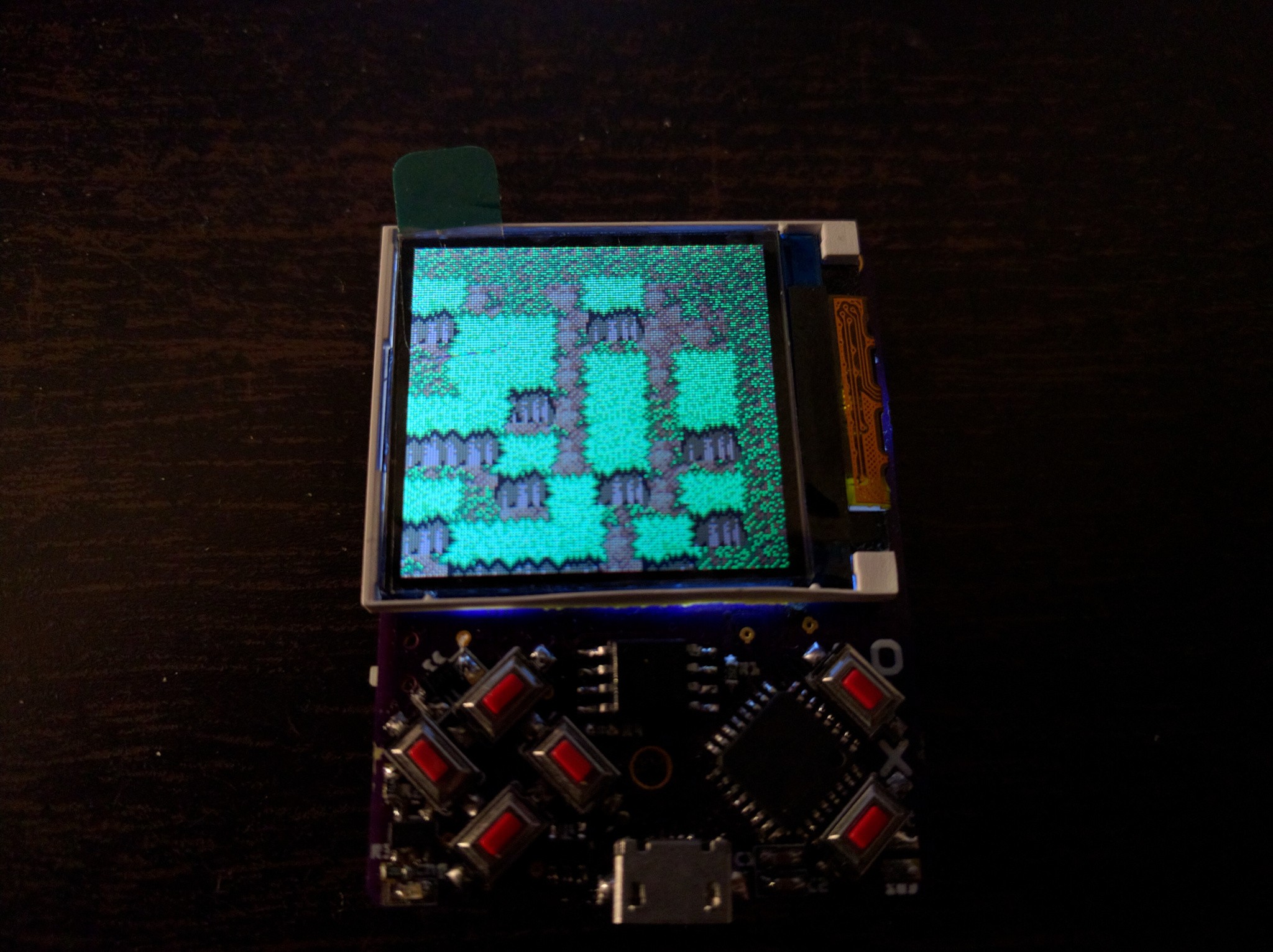Basic Tile Engine¶
Published on 2017-10-28 in µGame.
This took me less time than I anticipated — I started today at night, and in the evening I already have a basic tile and sprite engine with support for multiple layers and transparency, reading graphics from bmp files or from strings, and dirty rectangles.

There is only one tiny problem: it’s all written in Python, and so it’s really, really slow. Drawing the whole screen (one 16x16 square at a time) takes good 45 seconds. This is not so tragic when you realize that normally during the game you will update only 4 or 5 such squares every frame, and not 128, but still I need it a bit faster — 2 seconds per frame is not acceptable.
Fortunately, there is an easy way to make it faster: re-write it all in C (at least the one slow function that does the rendering), and compile into CircuitPython itself. That will require some more work, but should give me the speedup I need, especially since most of those operations are bit juggling, and C is really good at it.
Memory-wise, I can barely hold 2 banks of 16 tiles, each with its own palette, and 2 layers in memory. Of course that is easily solved by moving the graphics and the palettes into the flash, by freezing and compiling it into CircuitPython too. If I run out of memory there, I can always disable some modules I’m not using, like touchio or analogio.
 deshipu.art
deshipu.art